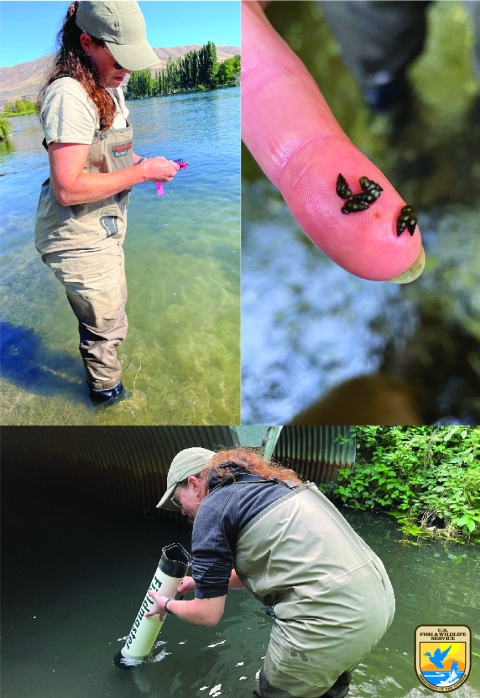Invasive species are non-native plants, animals or pathogens that can thrive in areas where they don’t occur naturally. They disrupt biodiversity by either eating or outcompeting native species for resources like food and habitat. Invasive species leave native species vulnerable to diseases, environmental stressors and ultimately at risk of extinction.
One such example is the notorious New Zealand Mud Snail (NZMS). They are easily spread to a new body of water via the excrement of the birds or fish who eat them. They survive this process through the use of an operculum, or trap door, at the opening of their shells. Once ingested, the snails close their operculum until they have safely passed through their prey’s digestive system. They can also spread by hitchhiking on recreational equipment like waders, boots, kayaks, or boats; this is one example of why it’s vitally important to always wash gear and equipment when traversing through different water systems. The NZMS outcompetes other native snail and macroinvertebrate species
and poses a major problem for the native snail populations and aquatic food web.
More information: What is the New Zealand Mud Snail?
Fish Biologist Jennifer Poirier uses environmental DNA (eDNA) and visual surveys to detect these invaders before they cause damage to the aquatic environment. Jennifer collects eDNA samples at different locations to determine if a waterway is showing signs of the invasive species invasive species
An invasive species is any plant or animal that has spread or been introduced into a new area where they are, or could, cause harm to the environment, economy, or human, animal, or plant health. Their unwelcome presence can destroy ecosystems and cost millions of dollars.
Learn more about invasive species . She surveys different locations along the lower Columbia River for the presences of NZMS using a combination of eDNA samples, water quality data and visual detection methods. After collecting her eDNA samples, Jennifer goes back to the lab, filters the water samples and sends them to Washington State University eDNA laboratory for analysis. The hope is that this collection method is sensitive enough to detect a new invasion of NZMS even if they aren’t found during the visual survey.
More information: What is eDNA?
Environmental DNA is becoming more popular among biologists for detecting rare, imperiled or invasive species. It can be used to better understand their preferred habitat, movement patterns and provide early detection of their spread from one system to another. The information gathered from eDNA helps natural resource professionals make scientifically informed decisions about how to protect native species and provide an effective conservation effort to ensure their livelihood.




